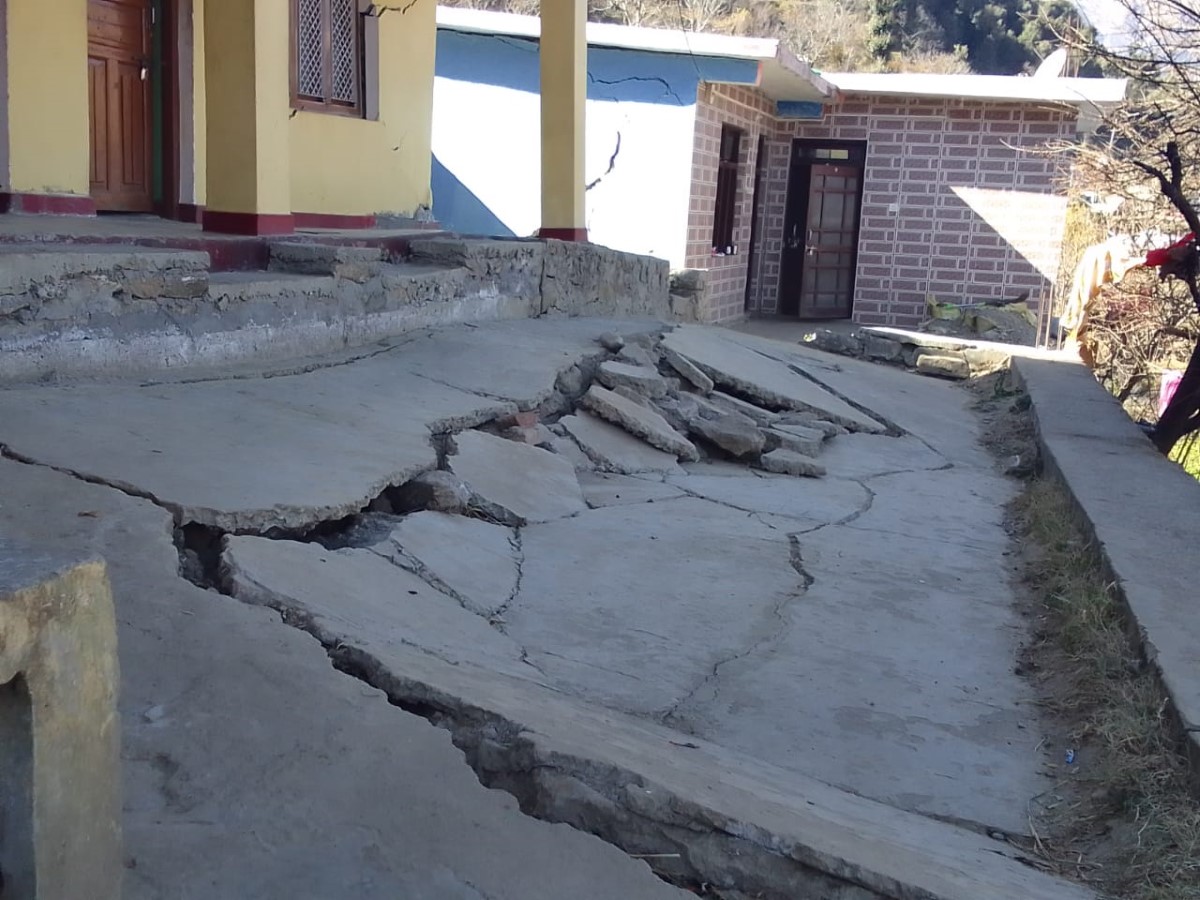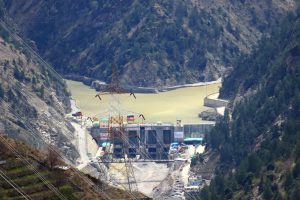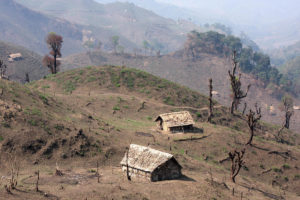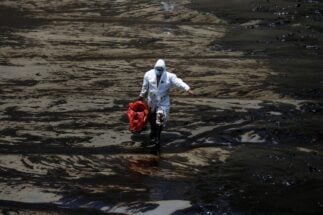Residents of the ancient pilgrim town Joshimath have had to flee their homes in the freezing January weather. Walls had cracked open, while foundations were tilting and sinking in a quarter of the approximately 2,500 buildings in the town. Federal and Uttarakhand state government officials are moving thousands of residents into hotels while halting all work on road widening and a hydropower project. Experts point out that this was a disaster waiting to happen because the authorities ignored multiple warnings over decades about the way roads and hydropower projects were being built.
Prime Minister Narendra Modi spoke to Uttarakhand Chief Minister Pushkar Singh Dhami over the weekend to check on rehabilitation, while the Prime Minister’s Office declared Joshimath a “landslide-subsidence zone” and asked experts to prepare short- and long-term plans on what to do.
But there has been no lack of expert advice or warnings – it is just that these were repeatedly ignored before the Joshimath disaster unfolded.
Less than a week ago, a delegation of Joshimath residents went to Uttarakhand’s capital Dehradun to complain about cracks in their houses due to construction work. They reportedly only managed to get five minutes with the chief minister. “He told us our fears are unfounded and sent us away without listening to us,” a member of the delegation told The Third Pole, speaking on the condition of anonymity.
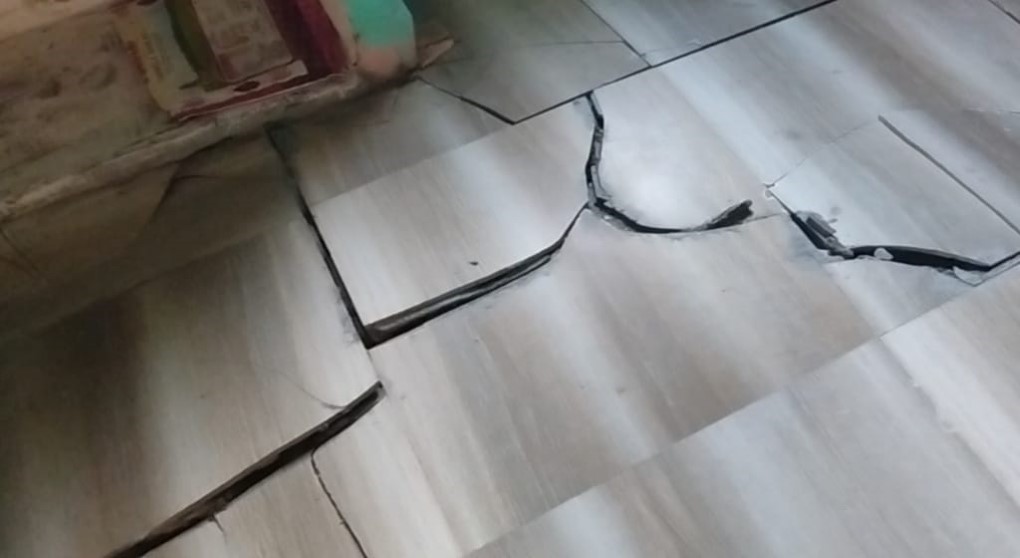
This was on 4 January. The next day cracks widened so quickly in so many houses and roads that residents forced managers of the local Tapovan-Vishnugad hydropower project to halt all tunnelling work. That night, district officials counted the affected buildings, which had gone up by the evening of 8 January.
Causes of the Joshimath disaster
Kalachand Sain, head of the Dehradun-based Wadia Institute of Himalayan Geology, told NDTV that Joshimath – a town 2,000 metres above sea level – has always been vulnerable because it sits atop the debris of an old landslide. This has failed to stop a building spree in recent years, with poorly planned construction destabilising the soil and choking underground water channels, so that water has accumulated under the foundations.
This process has been accelerated manifold by the work to widen the road to Badrinath – another pilgrimage centre higher up in the Himalayas. That road is part of the Char Dham (Four Pilgrimage Centres) road widening project. There have been multiple reports that trees are being cut and natural water channels choked because the project is failing to follow the government’s own principles on how to build a road in a mountain area. The road-widening work has now been halted.
The other large threat multiplier is the Tapovan-Vishnugad hydropower project of NTPC, India’s largest power utility. This is a run-of-the-river electricity generation project that entails boring a 12-kilometre tunnel through the hillside and channelling the water of the Dhauli Ganga river through the tunnel to generate electricity.
NTPC was quick to point out on 5 January that its tunnel did not pass below Joshimath, and should not be considered responsible for the disaster. But it does pass through the same aquifer that is below Joshimath.
Piyoosh Rautela – now the executive director of Uttarakhand state government’s Disaster Mitigation and Management Centre – co-authored a letter to the Current Science journal in 2010. In the letter, written on 24 December 2009, he had warned that the tunnel-boring machine being used by NTPC punctured an aquifer, allowing the water to move in a different direction underground, drying out the springs on which many residents of Joshimath depend for their household water supply. Rautela has now said the sinking of Joshimath “is likely caused by aquifer breaches as we see muddy waters pouring out”. However, he added, “there is no evidence yet to link or delink it with the hydel tunnel”.
Hemant Dhyani, another expert, told the Indian Express that “Only a water test can tell if the streams erupting in the town are from the hydel tunnel.” He said NTPC had been premature in disclaiming any connection with the Joshimath disaster.
This is the same hydropower project where around 200 workers were killed after being trapped in a flash flood within the tunnel on 7 February 2021. The flash flood was caused by the collapse of an ice wall – which experts attributed to climate change impacts – on the slopes above the Rishi Ganga, a tributary to the Dhauli Ganga.

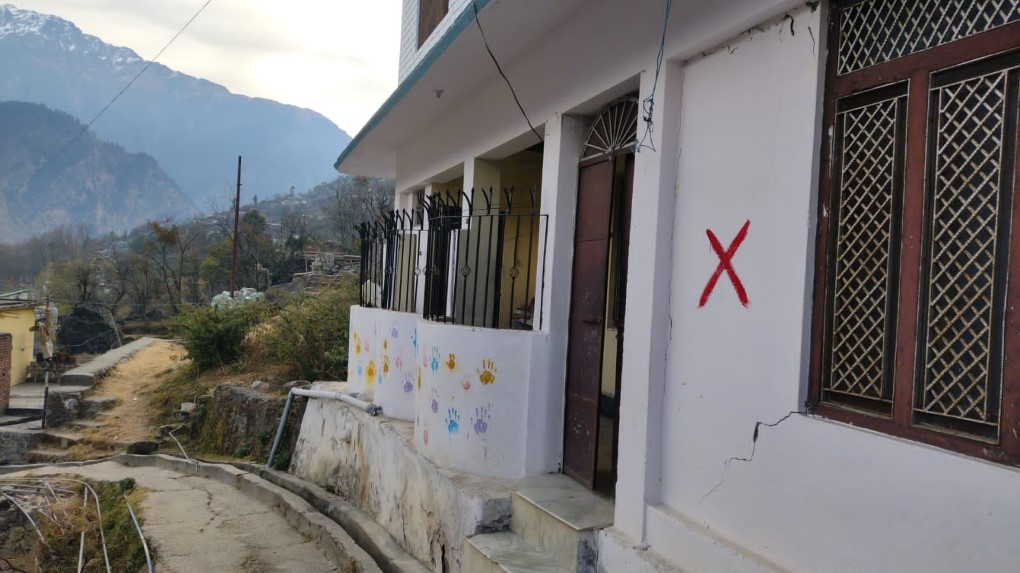
After the Joshimath disaster
While the authorities try to resettle the suddenly homeless people of Uttarakhand and await the recommendations of the expert committee that has been set up, locals are fretting. Atul Satti, a local environmental activist, told The Third Pole: “We demand instant action from the government that must include immediate stalling of NTPC project, closure of Chardham all-weather road [Haleng-Marwari Bypass], implementation of NTPC’s pact that insures houses, setting up a committee for rehabilitation of Joshimath within a set time frame, providing immediate help to all the affected people that includes compensation, food, shelter and other basic facilities and participation of local representatives [while deciding development projects.”
Joshimath is a clear example of what one should not do in the HimalayasAnjal Prakash, research director, Bharti Institute of Public Policy
Anjal Prakash, research director and adjunct associate professor at the Bharti Institute of Public Policy, Indian School of Business and a lead IPCC report author, said in a statement: “There are two aspects to the Joshimath problem. First is rampant infrastructure development which is happening in a very fragile ecosystem like Himalayas… Secondly, the way climate change is manifesting in some of the hill states of India is unprecedented. For example, 2021 and 2022 have been years of disaster for Uttarakhand. There have been numerous climate risk events like high rainfall events triggering landslides. We have to first understand that these areas are very fragile and small changes or disturbances in the ecosystem will lead to grave disasters, which is what we are witnessing in Joshimath.” He emphasised the need for a “strong planning process” before any development projects are taken up in such fragile ecosystems. “Joshimath is a clear example of what one should not do in the Himalayas.”
YP Sundriyal, head of the geology department at the HNB Garhwal University, pointed out that Joshimath does not have a proper drainage system, so “water percolation has decreased the cohesive strength of the rocks over the time. This has resulted in landslides, triggering cracks in the houses. Climate change is further worsening the matter, with more extreme weather events. We need to have the formation of some strong rules and regulations and moreover forced and timely implementation of these rules.”
Joshimath is one example from a larger trend
Joshimath is an ancient pilgrim town, and its plight is making news headlines. But it is not the only one facing problems in the Himalayan region. There have been reports of houses developing cracks near the sites of many hydropower projects in Uttarakhand and Himachal Pradesh. Even Bhutan, which has showcased its run-of-the-river hydropower projects as environmentally friendly, has towns with cracked buildings.
Beyond the impact of large hydropower projects is the way that expert advice and warnings, often of the government itself, is put aside in the rush to build infrastructure in the fragile Himalayan landscape. While there may be short-term profits for some construction companies, the long-term risks and costs are borne by the residents of these regions as well as by the state exchequer. It is past time that experts be listened to before the disasters, rather than asked what to do after the disasters they predicted have happened.
